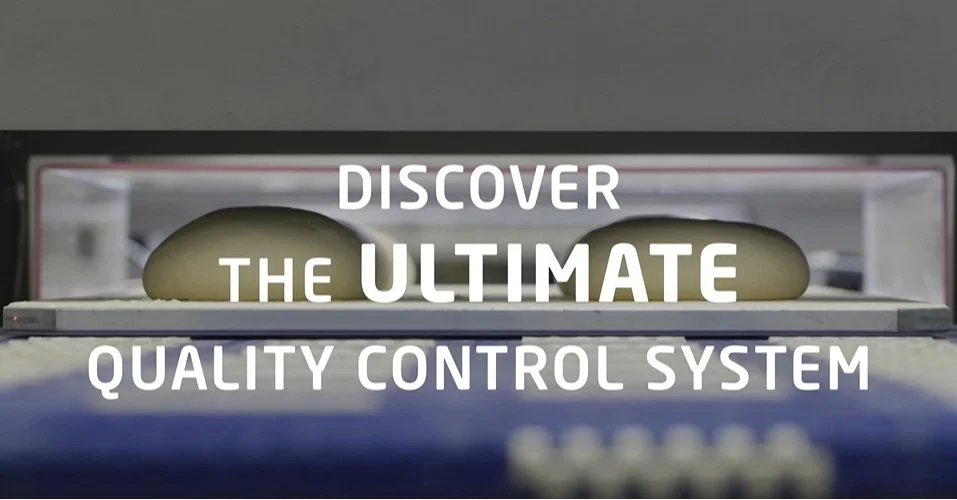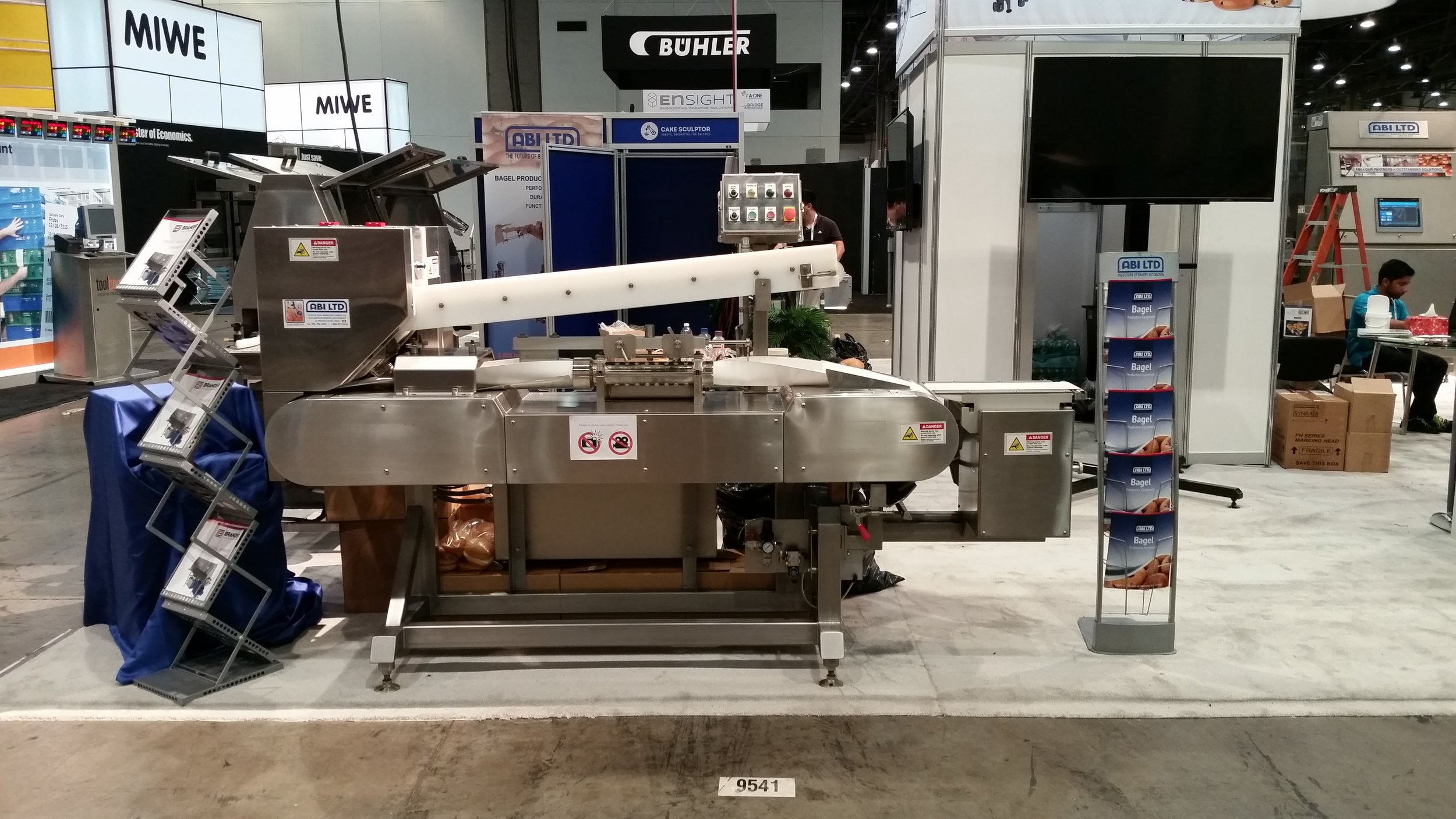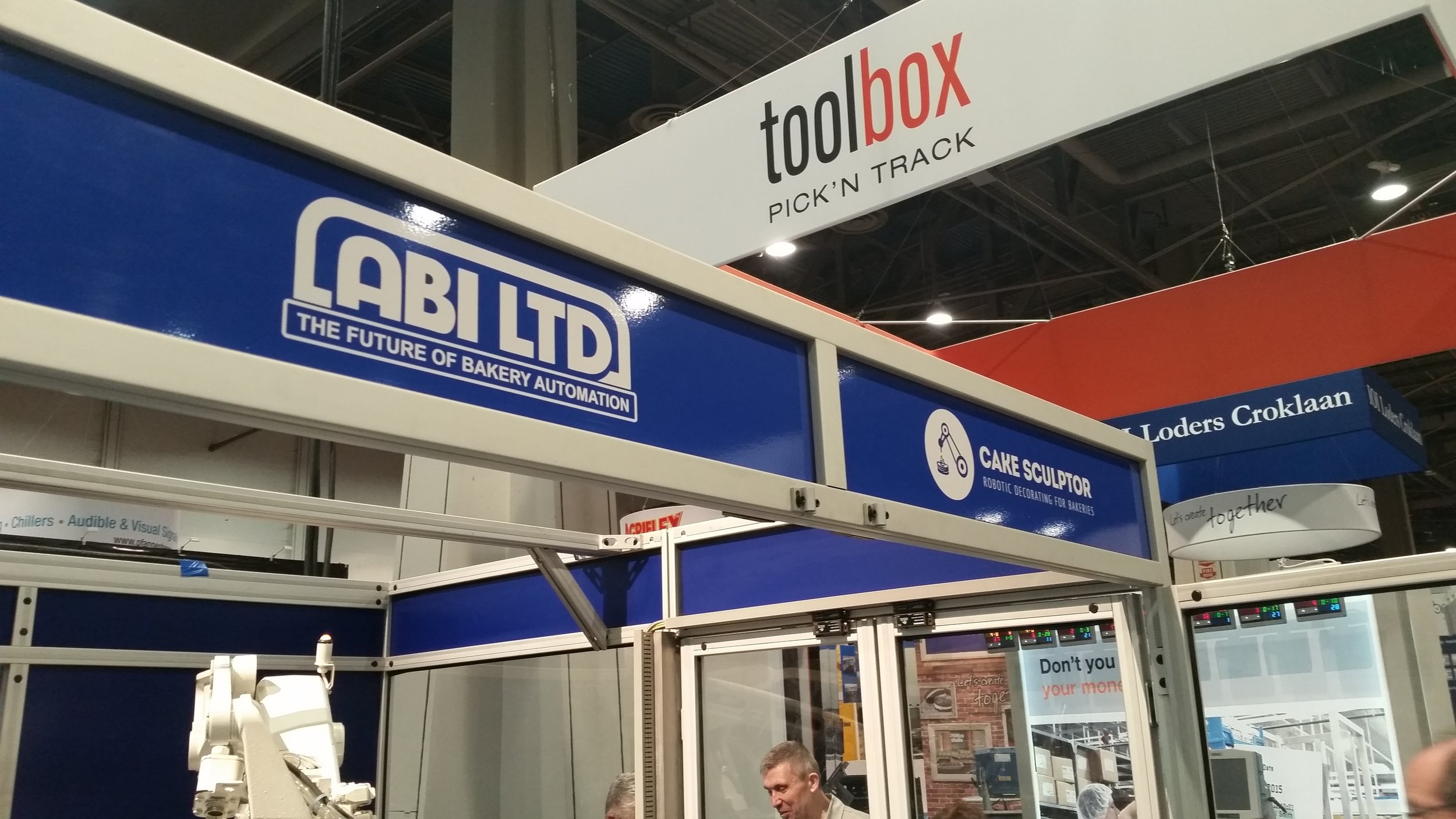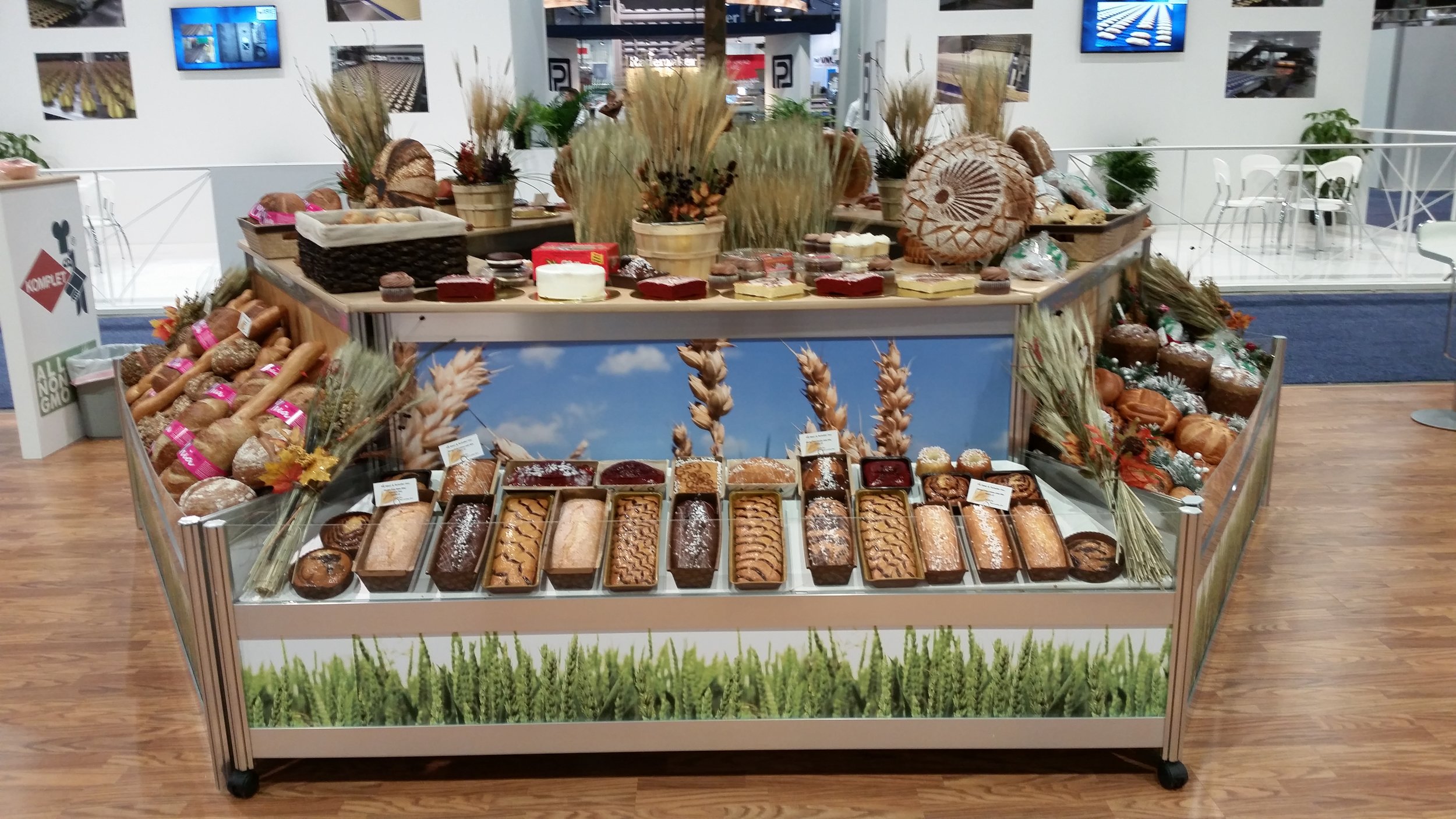IBIE 2016, like IBIE's before it, was a stellar event, featuring the latest and greatest technology and science emerging from the Baking Industry. Thousands of suppliers and purchasers from around the world were in attendance, with this rumored to have been the largest IBIE show ever.
Below are some images and video highlighting the 4 day mega-event.
We met some wonderful people and made some great connections. Overall IBIE 2016 was a resounding success and we look forward to building on the relationships established at the show.
Canada, EU sign trade agreement
The European Union and Canada signed the Comprehensive Economic and Trade Agreement (CETA).....
Read More
Robotics Industry Insight Showcases ABI LTD's use of Robotics in the Bakery...
Soft Dough Handling
The bakery automation industry has become a proving ground for the Soft Robotics gripper. One of those early adopters is ABI LTD, a global integrator of automated bakery equipment in Concord, Ontario, Canada.
“It was an ongoing struggle for us to find good, reliable solutions for soft dough products,” says Aaron Burke, Marketing and Communications Coordinator at ABI LTD. “When you’re dealing with soft dough products, particularly proofed dough products (dough that has been allowed to rise), they have to be handled very gently, otherwise you can end up leaving impressions in the dough, or you could deflate the dough or malform the product.”
Burke says they just shipped a robotic system for a large pizza company in U.K. and is working on a second system for them right now, both utilizing the Soft Robotics grippers. An ABB Robotics Preferred Partner, ABI LTD developed a four-robot system that picks raw pizza dough right from the rounder and places it into trays.
“In the old methods of picking and placing, we were using needle tools or suction cups, or some kind of metal tools. All of them had their downfalls.”
The Soft Robotics gripper is able to handle different sized dough balls with one tool. Coupled with a nimble robot and 3D vision that determines the position and size of the dough balls, you have a complete solution that doesn’t require tool changers.
“You have to have a tool that treats a 150-gram dough ball the same way it treats a 50-gram dough ball,” explains Burke. “It has to be able to open and close variably to grip the product without putting too much pressure on it.
“We were able to come up with a configuration that has five fingers,” he continues. “The fingers spread wide enough to get around the full size of the largest dough balls, but when the system recognizes that it’s a smaller dough ball, it squeezes a little tighter (based on the amount of air pressure flowing into the gripper). We were able to find a combination that can handle three or four different sizes of product with the same tool.”
Robotic Waterjet Cutting Takes the Cake
ABI LTD is bringing other innovations to the bakery automation space. Waterjet technology has been used in the food industry for years, but now robots are taking it to new levels of creativity and efficiency.
The Katana robotic waterjet cutting system marries a flexible robot with a pure waterjet system and 3D vision technology for high-volume cake and pastry cutting. Here’s how it works.
First, a 3D laser scanner determines the presence and position of the cake, then it maps out the product’s typography. Software crunches the data gathered by the vision system to determine the robot parameters for the pre-programmed cutting patterns. Then a robot equipped with a waterjet nozzle uses a very narrow stream of water at extremely high pressure to slice through the cake in the designated pattern. An easy-to-use touchscreen interface allows you to hand-draw or import new designs.
Watch the Katana robotic waterjet cake cutting system in action. In this case, the waterjet-wielding manipulator is an ABB IRB 140 six-axis robot.
No two cakes are exactly the same, so the integrated vision system is very important, especially when you’re nesting shapes within a cake. The system maps out how those shapes will fit together in a particular product to minimize waste during the cutting process.
Burke says the system can be used with fresh, semi-frozen, or deep frozen product.
“The waterjet pump at 60,000 psi of pressure coming from a tiny 0.05 millimeter orifice has a lot of cutting power,” he says. “But we find the best results to be in the semi-frozen state. That tends to be the sweet spot because you have a lot of structural integrity of the product at that temperature. Also products with inclusions, like fruits and nuts, are no problem.”
As seen in the video, traditional cutting methods often restricted cake slicing to straight-line cuts with blades that wear down. With the flexibility of a six-axis robot, you can cut circular patterns unachievable with a straight blade. Burke says they’ve cut everything from seahorses and hearts to maple leaves and Christmas trees out of cake.
“Historically, for that kind of stuff you had to go to some type of die-cutting system, where you’re stamping your shape into the cake. With dedicated tooling like that, you get into changeovers, you have potential cross-contamination. You have to make sure they are clean.”
In the food industry, robotic waterjet cutting uses only pure filtered water. This makes it both sanitary and environmentally friendly.
“Cakes and pastries are the primary use of these types of systems, but they can cut just about anything,” says Burke. “We’ve also integrated waterjet cutting for Rice Krispies squares and energy bars, which typically start off as long sheets and then get cut down into pieces.”
ABI LTD is using vision-guided robots for cake decorating and 3D ultrasonic scoring of bread loaves and pretzels. Robotic automation is also used for cupcake and muffin depanning, croissant bending and pinching, and sheet cake box loading. Check out these bakery robots on the job.
For the food producers of the world, the question is no longer whether to automate, but how soon to automate.
Originally published by RIA via www.robotics.org on 10/27/2016.
http://bit.ly/2dP3sIV
Bakery Showcase 2016 - International Centre Toronto (Mississauga, ON)
This is our first year attending the Bakery Showcase trade fair, being held this year at the International Centre Toronto, located in Mississauga, ON.
The show has turned out to be absolutely fabulous, so far. We have received a tremendous amount of positive feedback from show-goers about one of our latest innovations, Katana Robotic Scoring.
We've also had an opportunity to connect with some of our friends and colleagues from around the country, further strengthening our working relationships.
If you have a chance to come out and see us, doors open at 12:00 PM today and the show ends this afternoon at 5:00 PM. We look forward to seeing you there!!
For now, some pictures and video...
ABI LTD, along with our colleagues at ABB Inc. and our client King's Pastry of Mississauga, Ontario are featured in the cover story of the April 2016 issue of Canadian Packaging Magazine.
Check out our various robotic integrations, highlighted on the cover page as well as throughout the article, starting on page 15 of the digital edition.
http://www.canadianpackaging.com/digital-edition/
Proofed to Perfection!
When we were approached by Baking and Snack to participate in an article regarding Proofing, in typical ABI LTD fashion, we rose to the occasion.
Check out the comments and input of our President, Alex Kuperman, in their article regarding one of the most critically important processes in any type of bread-making.
http://www.nxtbook.com/sosland/bs/2016_03_01/#/86
A large, fully-automated Proofing array which can be used for proofing of various bread products.
When the industry has questions, ABI LTD has answers...
When our friends at Baking & Snack Magazine reached out for information about the new trends and innovations in cake and dessert decoration, we answered.
Check out this month's edition and specifically the article "Beyond the Squiggle" to see how ABI LTD is leading the industry in decorating innovations with our newest edition to the family, Cake Sculptor.
http://bit.ly/1jAA5MP
ABI LTD honored with innovation profile in November edition of BOSS Magazine...
Check out the profile of ABI LTD in this month's edition of Boss Magazine, by the folks at BOSS News Network!! ... http://bit.ly/1WIFfsm
Post-iba 2015 wrap-up
iba 2015, like the iba trade fairs before it, proved once again why it is the premier Bakery and Confection industry showcase in the world. This massive event takes place only once every 3 years and draws Thousands of exhibitors, as well as 10's of Thousands of visitors, from around the world. This year was no different, with roughly 1400 exhibitions, and upwards of 75,000 visitors passing through its halls during the 6 day, blockbuster event.
As in years past, iba 2015 was a resounding success for ABI LTD. The overwhelming amount of positive feedback and interest that we received was better than even we had anticipated. What we were left with was about a year's worth of follow up, dozens of blossoming new relationships and a lifetime of great memories. Here's a compilation of some of the sites from the iba 2015 Trade Fair and it's beautiful surroundings.
Daniel Thompson, Whose Bagel Machine Altered the American Diet, Dies at age 94
Courtesy of The New York Times - September 21, 2015
Daniel Thompson, who five decades ago automated the arcane art of bagel making, a development — seen variously as saving grace and sacrilege that has sent billions of mass-produced bagels raining down on theAmerican heartland, died on Sept. 3 in Rancho Mirage, Calif. He was 94. His family announced the death last week.
A California math teacher turned inventor, Mr. Thompson was a shaper of postwar suburban culture in more than one respect: He also created the first wheeled, folding Ping-Pong table, a fixture of American basements from the mid-20th century onward.
But it was for the bagel machine that Mr. Thompson remained best known. The invention changed the American diet, ushering in the welter of packaged bagels — notably Lender’s — now found in supermarkets nationwide, and making the bagel a staple of fast-food outlets.
“There was a kind of schism in bagel-making history: pre-Daniel Thompson and post-Daniel Thompson,” Matthew Goodman, the author of “Jewish Food: The World at Table,” said in an interview on Monday. “What happened with the advent of the automated bagel-making machine was that bagel makers were capable of producing far more bagels than had
ever been imagined.” What was more, Mr. Thompson’s machine proved to be a mirror of
midcentury American history. For bound up in the story of its introduction is the story of Jewish assimilation, gastronomic homogenization, the decline of trade unionism, the rise of franchise retailing and the perennial tension between tradition and innovation.
If Mr. Thompson’s brainchild, in the eyes of grateful consumers, democratized the bagel, there remain mavens who charge that his machine, along with those of later inventors, denatured the soul of a cherished cultural artifact. To these stalwarts, centered in the bagel redoubts of New York and Montreal, even invective-rich Yiddish lacks words critical enough to describe a machine-made bagel, though “shande” — disgrace — perhaps comes closest.
“Is what happened to the bagel a good thing or a bad thing?” Mr. Goodman said on Monday. “To me, it’s kind of a tragic story. What happened is that the bagel lost, both literally and metaphorically, its Jewish flavor.”
The tough, round heart of North American Jewish cuisine, with European roots reaching back hundreds of years, the bagel was until the mid-1960s available only in cities with thriving Jewish neighborhoods, most emblematically New York. Its shape — which sprang from dough that was rolled by hand, coiled into rings and boiled in a kettle before being baked in a wood- or coal-fired oven — was said to symbolize the circle of life. Such bagels, prized by purists but increasingly difficult to find now, were known for an earthy taste, an elastic crumb and a glossy, dauntingly hard crust born of their turn in the kettle. The softer bagel that is ubiquitous
today, which idealists deplore as little more than cotton wool, arose partly as a consequence of mechanization: Some bagel-making machines (though not Mr. Thompson’s, his family said) can accommodate only a looser, more watery dough.
As vaunted as it was in American cities, the traditional bagel for years remained so obscure — so ethnic — that as late as 1960 The New York Times Magazine felt obliged to define it for a national readership as “an unsweetened doughnut with rigor mortis.” Bagel-making was still a skilled trade then, restricted to members of the International Beigel Bakers Union, as the name was Romanized after the organization was founded in New York in 1907. (Until well into the 1950s, the minutes of the union’s board meetings were taken down in Yiddish.)
The bagel-maker’s craft was passed down from father to son, fiercely guarded from outsiders’ prying eyes. In a contingency that seemed straight out of Damon Runyon, or perhaps “The Untouchables,” nonunion bakers trying to make and sell bagels risked paying for it with their kneecaps.
“Every bagel that was made in New York City up until the 1960s was a union bagel — every one,” Mr. Goodman said. “The reason why this union was strong was that they were the only ones who knew how to make a proper bagel. And that was the keys to the kingdom.” The union — New York’s Local 338, with some 300 members — could hold the entire metropolitan area gastronomic hostage and, in disputes with bakery owners over working conditions, often did.
“Bagel Famine Threatens in City,” an alarmed headline in The Times read in 1951, as a strike loomed. (It was followed the next day by the immensely reassuring “Lox Strike Expert Acts to End the Bagel Famine.”) Then, in the early 1960s, Mr. Thompson’s machine changed the bagel
forever.
The son of Meyer Thompson, a Jewish baker of bagels from Hull, England, and the former Annette Berman, Abraham Thomas Thompson was born on Jan. 16, 1921, in Winnipeg, Canada, where his father had established a bakery. When he was a few weeks old, to memorialize a cousin who had recently died, his parents changed his name to Daniel. The family moved to Los Angeles when Daniel was a baby. As a young man he served in World War II with the Army Air Forces in the Pacific; he later graduated from the University of California, Los Angeles, where he studied industrial arts and mathematics. Afterward, Mr. Thompson taught high
school math and junior high school wood shop in Los Angeles. Like his father before him, Mr. Thompson was a tinkerer. In 1953, hereceived United States patent No. 2,645,539 for his “Folding Table, Tennis Table, or the Like.” Though the table did not make him wealthy, his family said, it did give him the wherewithal to attain the grail his father had long
sought: an automated bagel maker. The elder Mr. Thompson had experimented with a series of bagel-making machines over the years, but none proved commercially viable. In the late
1950s, the son perfected the father’s creation, building a functional machine that took the labor out of rolling and forming the dough. “It meant that any Joe off the street could make a bagel,” Mr. Goodman explained. “And that was one of a confluence of factors that in less than a generation turned the bagel, which had once been smaller and crusty and flavorful, into something that is large and pillowy and flavorless — it had turned into the kind of baked good that Americans like, à la Wonder Bread.”
In 1961, Mr. Thompson and his wife, Ada, established the Thompson Bagel Machine Manufacturing Corporation. Two years later, Lender’s, which had been making bagels in New Haven since the 1920s, leased the first Thompson machine. Where a traditional bagel baker could produce about 120 bagels in an hour, Mr. Thompson’s machine let a single unskilled worker turn out 400. This allowed Lender’s to make bagels in immense quantities and sell them, bagged and frozen, in supermarkets. Before long, as The NYBaker’s Bench, a culinary website, observed, theThompson machine, “like the steam drill and John Henry, put the handrollers of New York’s Local 338 out of business.” Mr. Thompson resided in Palm Desert, Calif. Besides his wife, the former Ada Schatz, whom he married in 1946, his survivors include two sons, Stephen and Craig, who now oversee the family bagel-machine business; a daughter, Leslie; a brother, Robert; and three grandchildren.
Lender’s, which still uses Thompson machines, is today among the largest makers of bagels in the United States, producing 750 million a year. The largest direct retailer of bagels in the country, which last year sold consumers more than 224 million in flavors like multigrain, cinnamon raisin and blueberry, is Dunkin’ Donuts. The company’s offerings also include a “bagel twist” — an elongated strand of baked dough in which the circle of life has been broken entirely.


























































































